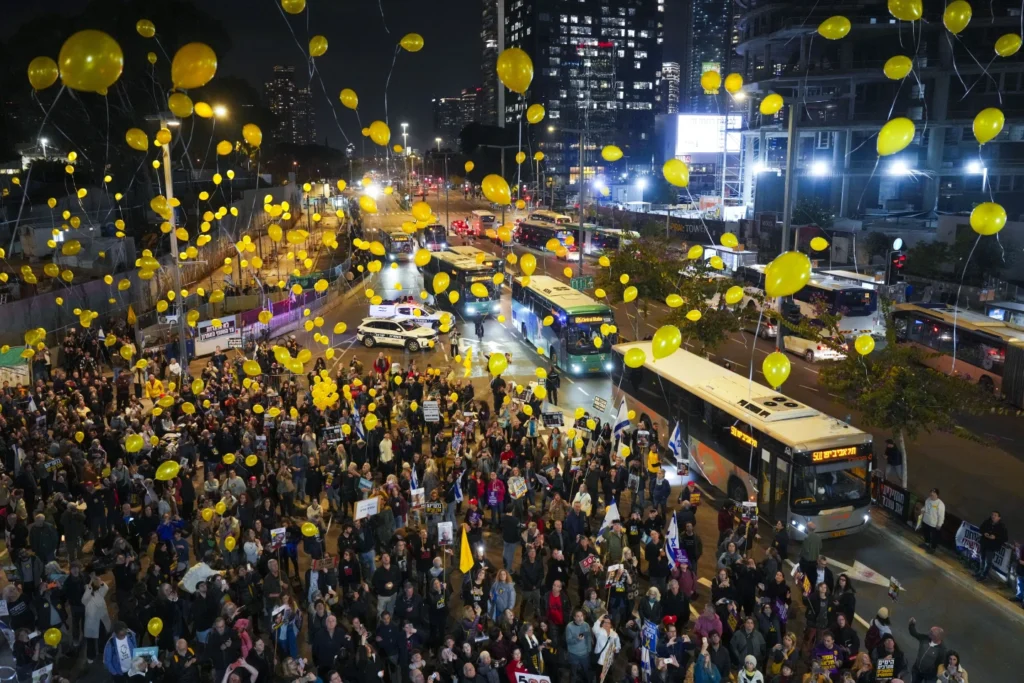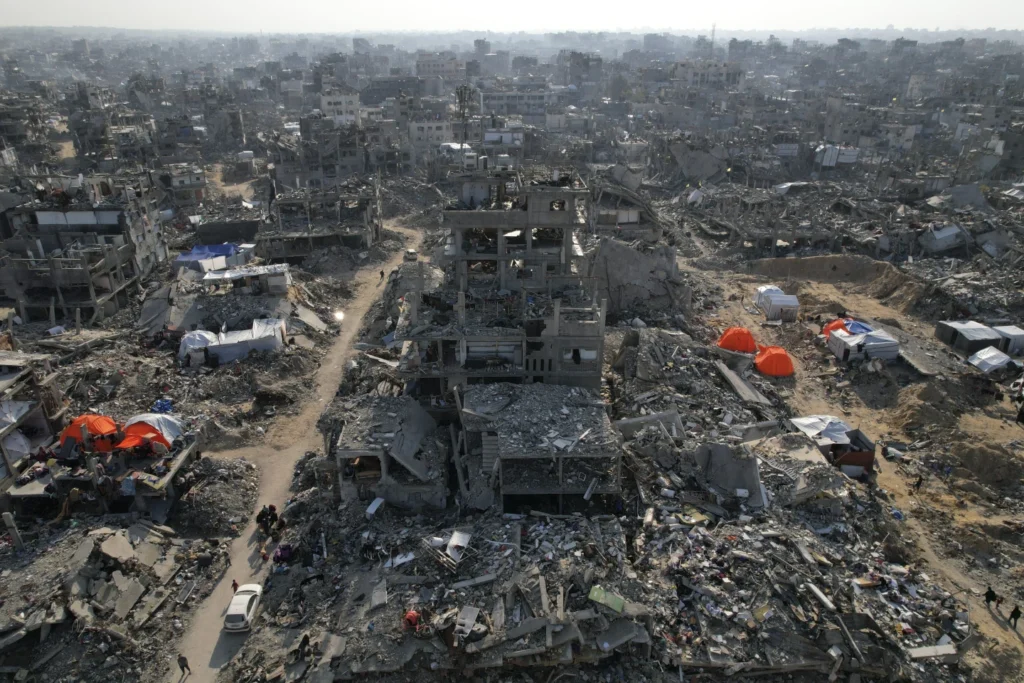Israel’s military announced it will maintain a presence in five strategic locations in southern Lebanon past Tuesday’s withdrawal deadline, raising concerns about the stability of the ceasefire with Hezbollah. Lebanese officials have voiced frustration over the delay, as Hezbollah warns against further postponements.

Military spokesperson Lt. Col. Nadav Shoshani stated that the five locations provide critical vantage points for Israeli security, particularly as approximately 60,000 Israelis remain displaced in northern Israel due to ongoing tensions. The U.S.-led body overseeing the truce extended the ceasefire by three weeks, but Lebanese President Joseph Aoun insisted that the agreement “must be respected.” Hezbollah leader Naim Kassem declared that “there can be no excuses” for any delays beyond Tuesday.
The ceasefire agreement stipulates that Israeli forces should vacate a buffer zone in southern Lebanon, allowing the Lebanese army and U.N. peacekeepers to assume control. While the ceasefire has largely held since November, tensions remain high. On Monday, Israel conducted a drone strike deep inside Lebanon, killing Muhammad Shaheen, a Hamas operations leader, in Sidon. The strike, which left a vehicle charred, has reignited fears of renewed hostilities.
As Israel and Gaza marked 500 days since the war began, conflicting signals from Israel and the U.S. have left the future of the ceasefire with Hamas uncertain. Talks regarding the second phase of the ceasefire have yet to commence, while protests in Israel call for an extension to secure the release of remaining hostages.
An Israeli official, speaking anonymously, stated that four bodies are expected to be returned to Israel on Thursday, though details remain unclear. Hamas has yet to comment on the matter. The current ceasefire, set to expire in less than two weeks, has seen a partial withdrawal of Israeli forces from Gaza and an influx of humanitarian aid. However, negotiations for the second phase—which would involve further hostage releases and Israeli troop withdrawals—have stalled.
Recently released hostages have described dire conditions in captivity. “All I care about is for my friends to return. There were six of us living in unbearable conditions,” said Ohad Ben Ami, who was freed just over a week ago. Families and activists have continued to push for urgent action, warning that the hostages “don’t have time.”
The second phase of the ceasefire could see Hamas release over 70 remaining hostages, around half of whom are believed to be dead, in exchange for Palestinian prisoners and a potential permanent truce. However, Israeli Prime Minister Benjamin Netanyahu and U.S. President Donald Trump’s administration have reiterated their commitment to eradicating Hamas, a goal seen as incompatible with a sustained ceasefire.

Trump has proposed permanently relocating Gaza’s population of over 2 million and placing the territory under U.S. administration—a plan welcomed by Israel but widely rejected by Palestinians and Arab nations. Human rights organizations argue that such a move could violate international law. Meanwhile, Egypt is drafting a counterproposal to rebuild Gaza without displacing its residents.
Since Hamas-led militants launched the Oct. 7, 2023, attack that killed approximately 1,200 people and abducted 250, Israel’s military response has resulted in over 48,000 Palestinian deaths, according to Gaza’s Health Ministry. More than half of the casualties are reported to be women and children.
Amid ceasefire uncertainties, Israel has announced plans to expand settlements in the occupied West Bank. Watchdog group Peace Now revealed that the government has issued a tender for 974 new housing units in Efrat, increasing its population by 40% and restricting the growth of nearby Bethlehem.
Israel has established over 100 settlements across the West Bank, housing more than 500,000 settlers among a Palestinian population of approximately 3 million. Palestinians live under military rule while Israeli settlers enjoy full citizenship rights.
The West Bank, Gaza Strip, and East Jerusalem were captured by Israel in the 1967 Mideast war. Palestinians seek these territories for a future independent state, but ongoing settlement expansions threaten that vision.
As tensions simmer across multiple fronts, Israel’s delicate ceasefire agreements with Hezbollah and Hamas hang in the balance, with uncertainty over whether diplomatic efforts will prevent further escalation.



